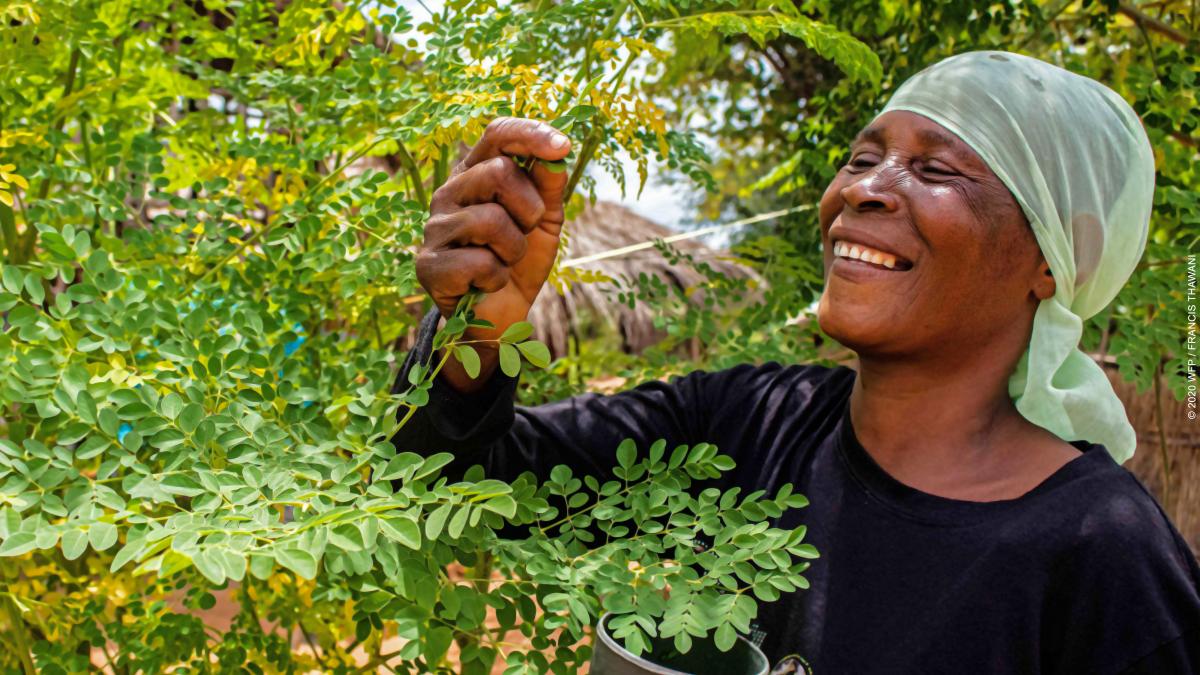FACT SHEET – In Ethiopia, degraded agricultural and pasture lands, and poorly utilized water resources have exacerbated poverty, food insecurity, and the loss of biodiversity, as well as intensifying conflict. By incorporating environmental issues into USAID’s work in Ethiopia, we strive to promote sustainable development, livelihood, and disaster resilience.
Government of Ethiopia Climate Priorities
In 2021, as part of Ethiopia's updated Nationally Determined Contribution under the Paris Agreement, the Government of Ethiopia announced ambitious emissions cuts and other commitments, including:
- Reduce emissions by 68 percent by 2030
- Reforest and restore up to 15 million hectares
- 40 adaptation interventions across agriculture, water, forestry, transport, urban, health, and more
USAID’S Climate Change Program: Objectives and Results
USAID supports Ethiopia’s development and climate priorities through a series of interlinked activities and partnerships. USAID is currently partnering with Ethiopian communities across the country to promote soil and water conservation. We are also protecting critical watersheds and promoting the sustainable use of water resources. By using innovative technologies USAID is also forecasting weather patterns to predict potential droughts or other climate shocks—and to strengthen disaster planning and improve food security.
USAID is also investing in sustaining Ethiopia’s pastoral and agricultural sectors. This includes partnering with local pastoral communities to improve land management. Supporting the disaster risk management of communities across the country is also key—which includes helping them to invest in climate resilient livelihoods, and to improve their adaptation to climate shocks. All told, these investments are improving food security for millions of the most vulnerable throughout the country.
Adaptation
USAID supports Ethiopian communities and households to adapt and respond to climate change impacts. As the cycle of droughts, floods, and other climate-related shocks has accelerated, USAID is investing in improving disaster risk management, preparedness, and response.
Key Results
- Households actively participating in USAID resilience interventions in Ethiopia’s lowlands experienced a 50 percent lower decline in food security than non-participating households during the extended 2015 to 2017 drought.
- USAID supported regional Disaster Risk Management Bureaus to develop action plans that strengthened DRM systems in 36 districts.
- USAID supported livestock traders during droughts to facilitate sale of livestock, helping producers and traders to stay in business. USAID invested $78,000 to leverage $1.4 million in sales of livestock that would have otherwise died during the drought.
- USAID constructed irrigation systems to support over 1,000 households get access to water for their farms and rehabilitated and built water systems to bring potable water to over 12,000 people and reduce the time spent on water collection by 86 percent.
Key Adaptation Programs
USAID’s Household Economy Approach uses novel methods of identifying vulnerable households to provide climate-related monitoring, analysis, forecasting, and early warning capacity to local communities and local disaster risk management authorities.
USAID’s Response Leadership partners with young professionals to build a corps of disaster risk management professions, with skills including strengthening climate and disaster risk analysis and community-based contingency planning.
USAID’s Resilience in Pastoral Areas activities increases climate resilient growth in Ethiopia’s lowlands by promoting livelihood diversification. The activity also improves natural resource management, livestock and crop productivity, local use of weather information, and access to weather-based livestock insurance products. RiPA activities are supporting regional DRM bureaus to develop action plans that strengthen DRM systems.
USAID’s Resilience Food Security activities (RFSA) improve rangeland and watershed management. This includes the restoration of degraded communal lands. The activity also supports communities to use land management techniques, such as terracing, moisture conservation, and rainwater harvesting, to promote a more sustainable ecosystem.
The Feed the Future Ethiopia Livelihoods for Resilience Activity used participatory scenario planning to deliver seasonal weather forecasts and advisories to beneficiaries. This process facilitated knowledge exchange between regional meteorological service centers, people with local and traditional knowledge, government experts, and community members to interpret seasonal weather information and predict likely outcomes.
Feed the Future Global Supporting Seed Systems for Development (S34D) Activity promotes climate-smart agricultural practices and technologies. The activity also increases access to improved agricultural inputs that contribute to soil and water conservation, and increases access/availability of drought-resistant seeds.
Natural Climate Solutions
In Ethiopia, USAID promotes sustainable forest, agricultural, and community land management to address the causes of land use change, promote sustainable livelihoods, and increase the effectiveness of environmental policies. Protecting forests and other key ecosystems sustains livelihoods, mitigates climate change risks, and maintains environmental services like biodiversity preservation, carbon capture, and water purification.
Key Results
- Invested in soil and water conservation of 63,614 hectares of land, including planting over 42 million tree seedlings.
- Mapped 4 million hectares of rangeland using satellite vegetation data to enable herders to manage their grazing lands.
- Supported 36 sub-districts to develop community-level disaster risk management assessments and action plans. USAID also provided training on climate vulnerability analysis.
Key Natural Climate Solutions Programs
USAID/Ethiopia Biodiversity and Community Resilience in the Omo Valley Activity improves biodiversity, livelihood security, and human rights in Ethiopia’s Lower Omo through community-based conservation, ecotourism, and regenerative agriculture, as well as capacity building for political advocacy.
Feed the Future Ethiopia Highlands Resilience Activity supports highland communities and households to strengthen their climate resilience and to pursue sustainable livelihoods that adapt to climate change impacts.
USAID’s Resilience in Pastoral Areas activities increases climate resilient growth in Ethiopia’s lowlands by promoting livelihood diversification. The activity also improves natural resource management, livestock and crop productivity, local use of weather information, and access to weather-based livestock insurance products.
Feed the Future Ethiopia Land Governance Activity supports pastoral communities to get communal land titling and to use their land based on participatory land use plans. Community land governance entities managed the use of land by enforcing bylaws approved by community members. This ensures a sustainable landscape helping to exercise climate smart agriculture, protect the environment and improve agriculture productivity.
Feed the Future Ethiopia Transforming Agriculture Activity is working with farmers and agribusinesses to develop a more resilient, sustainable agricultural market system. This will result in more affordable, safe, and healthy diets through a more productive, resilient agriculture system.
USAID’s Health, Ecosystems, and Agriculture for Resilient, Thriving Societies Program invests in sustainable conservation of threatened landscapes and the well-being and prosperity of communities that rely on those landscapes. By working with local communities, USAID community-led conservation efforts that promote biodiversity and local development.
For More Information




